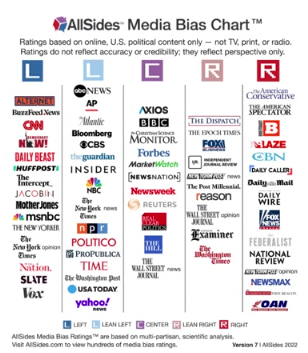Unit III - Media and Government
Forms of Mass Media
- **Mass Media:**refers to all forms of communication that transmits information to the public. \n
Newspapers: started in colonial times. Expensive and small circulation. (Funded by political organizations with biases).
Newspapers influenced Yellow Journalism.
\n
Magazines: Less frequent but more in depth. Exposed political corruption.
- examples of Magazines: Muckrakers Time, Newsweek, U.S. and World Report.
- Muckrakers: a group of people who expose corruption in the government and society by writing about it.
Radio: (1920s) News personalities became celebrities. FDR used radios for fireside chats.
FDR helped the common people understand the news in simple terms.
\n
Television: helped broadcast journalism. Largest audience before the internet.
- the first presidential debates that was aired on Television was Nixon and JFK.
- people believed Nixon sounded better on a Radio; while other people claimed that JFK was attractive; Nixon too old on Television. (Different effects on people).
Roles of the Media (IEP):
Inform: informs the public as a way to shape public opinion and provide a link between citizens and the government. (CSPAN).
Entertain: keeps people interested and potentially distracted by celebrity news, gossip, social media to take attention off other events.
Persuade: to set the agenda by acting as Gatekeepers (determining what makes it to the public) and Watchdogs (calling out corruption on all 3 levels of Government).
- Gatekeepers determines what makes it on the air for people to see, hear, and read.
What is News?
- News are any important events that happens from the last 24 hours.
- media determines what is “news” by deciding what to report.
- media is directed through gatekeepers (executives, news editors, and prominent reports).
- Elections are more “horse-race journalism”; then about the issues.
examples of common modern forms of media today: twitter, podcasts, Instagram, blogs/vlog, Facebook
- the biggest and the most common way people can get news from are from social media.
Media and the President:
News Releases: prepared texts to be read exactly as written.
\n
News Briefings: announcements and daily questioning of press secretary.
Press secretary are people who gives
information about the president and answer questions from the media on a daily basis.
News Conferences: questioning of high-level officials; often rehearsed.
Leaks:
- leaks are information released anonymously on purpose or on accident.
On the record: May quote by name; can have everything the quote says.
Off the record: what is said cannot be printed. (often the informant is anonymous).
\n
On Background: may be printed; but the official’s name and position in the government must remain anonymous.
- On Background mostly applies to government officials.
On deep background: may print what is said but with no one mentioned.
Media and Congress:
- (Few Reporters) Congress gets less coverage as viewers prefer information from the White House.
- (Congress as a whole) When reported, it’s about Congress, not about it’s individual members.
- (Congressional News) Confirmation hearings, oversight investigations of scandals among members.
- (C-SPAN) Cable-Satellite Public Affairs Network; increases coverage of Congressional activities.
Observations on the Media Companies:
(1983) - 90 percent of All American Media was controlled by 50 different companies.
(2011) - the same 90 percent of the same companies; only 6 of them control the media.
- a lot of media we watch today are owned by these companies:

Observations about Time Magazine Covers:
- Time Magazine (or overall most U.S news site) tends to focus heavily on U.S. News; and not worldwide issues.
Observations on the Media Graphs:

- Social media increases a lot of misinformation purposely or not.
- People like to confirm their own biases by watching media that conforms by their beliefs.
- People with high political knowledge tends to read information/news from different sources; while people with low political knowledge tends to only watch or read news from local TV stations and social media.
- it’s important to focus on multiple different news sources.
Biases in Media:
- much criticism that the media biased and mostly with a liberal slant.
- owners, publishers, and editors of media are said to be more conservative.
- the more biased the media tends to be; the more supportive of incumbents (current holders of positions in the government).
- “Pack Journalism” happens when journalists adapt viewpoints of other sources without fact checking.
- stories are picked up from other reporters; prone to misinformation.
- When the media report the same story all at the same time trying to "break" a story, this is referred to as Pack Journalism.
Types of Biases:
Omission: leaving particular information out.
- we assume that every news story covers everything important that we need to know; a lot can be left uncovered that is also important.
Selective Sources: leaving particular sources out.
Spin: using an opinion to explain a way out of something.
Labeling: aggressively labeling one side and not doing it for the other side.
- mostly biased while pointing out the other side without taking things into account.
Placement: where the story is located in the newspaper or online.
Story Selection: following a particular story while leaving out others.
- When a media source follows one story for longer than others and does not give time to stories that may go against their bias, it's known as Story Selection.
Observations on Media Biases Charts:

- All news has a bias; AllSides.com helps you show news sources from all sides.